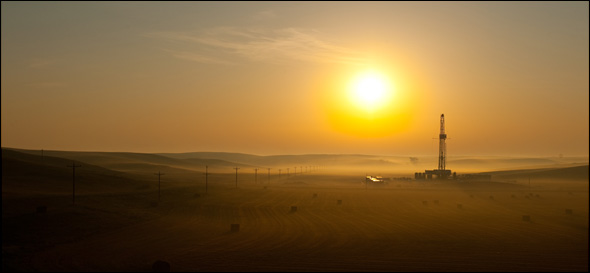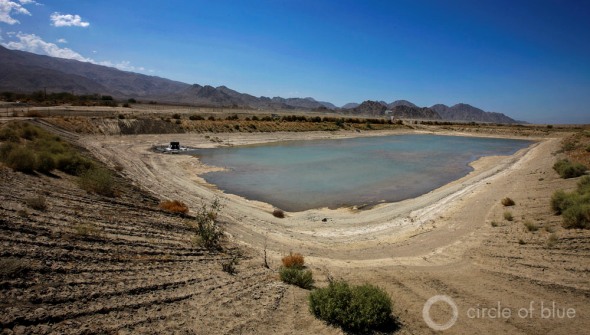Peter Gleick: Where to find one million acre-feet of water for California.
An advanced peek at a new assessment
Californians have improved their efficiency of water use over the past 25 years. The state’s economy and population have grown. But total water use has not grown, and per person, each Californian uses far less today. This improvement in efficiency has saved the state’s collective rear end. So far.
But plenty of water problems still remain, despite the welcome rains of the past week. Current water use is still too wasteful, as I’ve discussed many times in this column. Here are just two examples: Even today, after California’s conservation efforts, over 60 percent of all toilet flushes are done by toilets whose flows are well above national standards, suggesting that many old inefficient fixtures remain in homes. More than 75 percent of all crops in California are still grown with inefficient flood or sprinkler irrigation systems.
The Pacific Institute has completed a series of independent reports on urban and agricultural water efficiency that provide a comprehensive statewide analysis. (See “Waste Not, Want Not: The Potential for Urban Water Conservation in California” and “Sustaining California Agriculture in an Uncertain Future.”) Our findings have been adopted by the California Department of Water Resources in the California Water Plan. These studies show that existing, cost-effective technologies and policies can readily reduce current state demand for water by 6 to 8 million acre-feet per year, or around 20 percent. Governor Schwarzenegger’s recent call for a 20 percent reduction in water use by 2020 is thus based on sound science and economics, even if the policies to achieve such savings are not yet in place. The recent water bill takes weak steps toward an urban savings of 20 percent, and it lets the agricultural sector completely off the hook.
Water Number: One million acre-feet of water. In a few weeks, the Pacific Institute will release a new assessment of how to save one million acre-feet of water, split 60/40 among agricultural and urban users, quickly and cost effectively. Here is an advanced look at some of our findings:
— 400,000 acre-feet of water per year can be quickly conserved by urban users by replacing only some of the many remaining inefficient toilets, showerheads, commercial spray-rinse nozzles, and washing machines. These savings would require an investment of under $2 billion. And over the life of these fixtures the energy, water, and wastewater savings will far exceed that initial investment. Just for comparison, the proposed Temperance Flat Dam will cost an estimated $3.3 billion dollars and produce well under 200,000 acre-feet of water annually. [Some analysts think it will produce less than 100,000 acre-feet and cost far more than $3.3 billion.]
— Another 600,000 acre-feet of water per year can be saved by applying smart irrigation scheduling to 30 percent of the state’s vegetable and orchard acreage, practicing regulated deficit irrigation on 20 percent of current almond and pistachio acreage in the Sacramento Valley, and converting 20 percent of Central Valley vegetables and 10 percent of orchards and vineyards to drip and sprinklers. These changes would save water at a cost of around $100 per acre-foot.
These savings are just the tip of the iceberg: far more water could be saved at far less cost than any proposed new supply option.
California’s total water use in 2020 could be 20% below current levels while still satisfying a growing population, maintaining a healthy agricultural sector, and supporting a vibrant economy. Some of the water saved could be rededicated to agricultural production elsewhere in the state; support new urban and industrial activities and jobs; and restore California’s stressed rivers, groundwater aquifers, and wetlands — including the Sacramento-San Joaquin Delta, where fisheries and farmers are under pressure.
Water conservation and efficiency have the additional benefit of producing significant energy savings. Capturing, treating, transporting, and using water requires a tremendous amount of energy. This is particularly true in Southern California, where water supplies and population centers are separated by hundreds of miles, requiring a tremendous amount of infrastructure to move water from where it is available to where it is needed. Improving water-use efficiency thus saves more than water: it saves energy and reduces greenhouse gas emissions.
Finally, a quick comment to Senator Boxer and Senator Feinstein on the recent political attempts to overturn or eliminate the requirement that the Federal government protect endangered and threatened species. This is an outrage. Species extinction is not a sustainable water policy. And the collapsing ecosystem is not the cause of our water problems, it is a symptom. If the problem is falsely and ideologically defined as “people versus fish,” our water policy will have failed. We must ensure that both people and fish can thrive with the water we have.
Peter Gleick
Dr. Gleick’s blog posts are provided in cooperation with the SFGate. Previous posts can be found here.










The trouble I have with the whole conservation thing is that I know as soon as 1 Million acre feetare set aside – somebody will want to use them for planting new almond trees or building new subdivisions.
Check out this California Farm Bureau Federation article “Demand for tree crops boosts nursery sales” at http://www.cfbf.com/agalert/AgAlertStory.cfm?ID=1464&ck=C913303F392FFC643F7240B180602652
You see….? Even though there supposedly is a “drought” or “dustbowl” type of situation, and supposedly there’s not enough water to irrigate our crops, somebody is planting almond trees like crazy!!!
I don’t care if you can save 1 Million acre feet, or 100 Million acre feet – there needs to be a cap on the amount of perennial crops, or all your fine conservation ideas are for naught.
It’s not that the “conservation thing” is “trouble”. We need a more elaborate “conservation thing”. One of the problems with our agricultural system is that we lack comprehensive land use policies and are perpetually losing farmland to housing development and then trying to re-establish the croplands and orchards in areas that are more and more marginal.
We also need to think about groundwater recharge and appropriate flood control. . Much of our urbanization paves over the surface and channelizes stream beds, sending water, such as that from our recent rains, quickly gushing out to sea. Much of the farm land that now requires irrigation was originally marshes and part of a system that recharged the aquifers and cleansed and enriched the runoff water before it reached the ocean. Many areas that depend on well water are utilizing this resource in a non-sustainable fashion.
Reductions in usage will help but are not sufficient.
water is really a problem not only in the United States of America, other countries are having trouble with it too. Water is even predicted to be like oil which will be scarce soon. Conservation is not merely the solution, there should be other ways to address the upcoming global crisis on water supply. and everybody should act on it because we all use water in our daily lives. this concerns us all, not the authorities only.